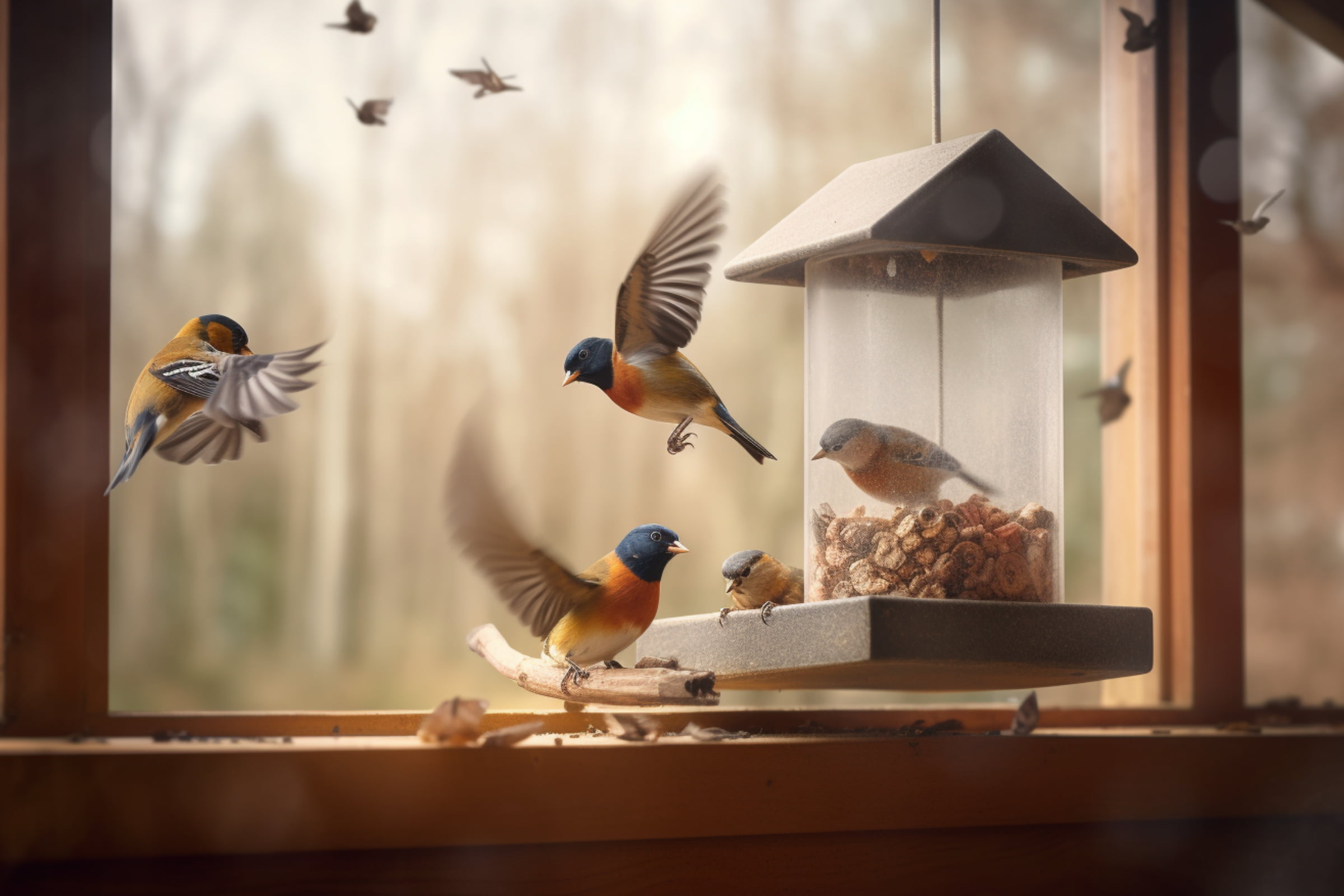The amount of time it takes for birds to discover a window bird feeder can vary significantly, ranging from immediate discovery to one week or more. Several factors influence the discovery time, including the feeder’s placement, the type of bird food offered, seasonal changes, and competition from other feeders or predators.
To increase the chances of birds finding your feeder more quickly, it is recommended to place it near natural bird habitats, offer a variety of bird foods, create a bird-friendly environment, and minimize the presence of predators.
Typical Time for Birds to Discover a Window Bird Feeder
The time it takes for birds to find a window bird feeder can vary depending on various factors. Here are some general guidelines:
Immediate discovery
In some cases, birds may find your feeder within hours or even minutes of installation, especially if you live in an area with a high bird population or if your feeder is placed in an optimal location.
Discovery within a few days
It is not uncommon for birds to discover your feeder within a few days. As birds fly around in search of food, they will eventually notice the new food source and begin visiting.
Discovery after a week or more
In some cases, it may take a week or longer for birds to find your feeder. This could be due to factors such as an unfavorable location, competition from other feeders, or a lack of bird activity in your area.
Factors Affecting the Time It Takes for Birds to Find a Window Bird Feeder
Several factors can impact how quickly birds discover your window bird feeder:
Location of the feeder
The placement of your bird feeder plays a crucial role in how quickly birds find it. Ideally, your feeder should be placed near trees or shrubs where birds naturally congregate. The height and visibility of the feeder also influence its attractiveness to birds.
Type of bird food
The food you offer in your window bird feeder will also affect how quickly birds are attracted to it. Different bird species have different food preferences, so offering a variety of foods can help attract a wider range of birds. Additionally, consider the availability of alternative food sources in your area, as abundant natural food sources may make birds less inclined to visit your feeder.
Seasonal changes
The time of year can play a role in how long it takes for birds to find your feeder. Migratory patterns and the availability of natural food sources can fluctuate throughout the year, impacting bird populations and their attraction to your feeder.
Competition and predation
The presence of other bird feeders in your area can create competition for your window bird feeder, potentially making it more difficult for birds to find. Additionally, the presence of predators like cats or larger birds near your feeder may deter smaller birds from visiting.
Tips for Attracting Birds to a Window Bird Feeder More Quickly
While there is no guaranteed method to instantly attract birds to your window bird feeder, there are steps you can take to increase your chances:
Choose the right feeder location
Place your bird feeder near trees or shrubs where birds are likely to gather. Ensure it is visible and easily accessible. Experiment with different locations to find the perfect spot.
Offer a variety of bird food
Different bird species have different dietary preferences, so offering a variety of foods can attract a wider range of birds. Research which types of food are most attractive to local birds.
Create a bird-friendly environment
Provide additional resources besides food to make your yard more inviting to birds. Offer water sources like birdbaths or shallow dishes and plant bird-friendly vegetation such as native plants, shrubs, and trees.
Minimize predator presence
Make birds feel safe by deterring predators like cats or larger birds. Install baffles on feeder poles to prevent climbing predators and place feeders at a safe distance from hiding spots.
Monitoring and Maintaining the Window Bird Feeder
To maximize the chances of birds finding your window bird feeder, regularly monitor and maintain it:
Regular cleaning and refilling
Keep your bird feeder clean and well-stocked with fresh food. A dirty feeder can be harmful to birds due to bacteria and mold. Clean and refill your feeder at least once a week or more frequently if needed.
Observing bird activity
Pay attention to the birds visiting your feeder and their food preferences. This can help you tailor your offerings to attract more birds or specific species. Keep a birdwatching journal or use a bird identification app to track the species visiting your feeder.
Adjustments to improve bird attraction
If birds are not visiting your feeder as much as desired, make adjustments. Try moving the feeder to a different location, changing the types of food offered, or adding additional bird-friendly features to your yard. Be patient and experiment until you find the perfect setup.
Conclusion
The time it takes for birds to discover a window bird feeder can vary greatly depending on factors such as location, food, and competition. Patience and observation are key in birdwatching. By following the tips outlined in this guide, you can create a welcoming environment that encourages birds to visit your feeder more quickly. The rewards of birdwatching, from learning about different species to enjoying their beauty and behaviors up close, make the effort well worth it. Set up your window bird feeder, grab your binoculars, and enjoy the fascinating world of birds right outside your window.
